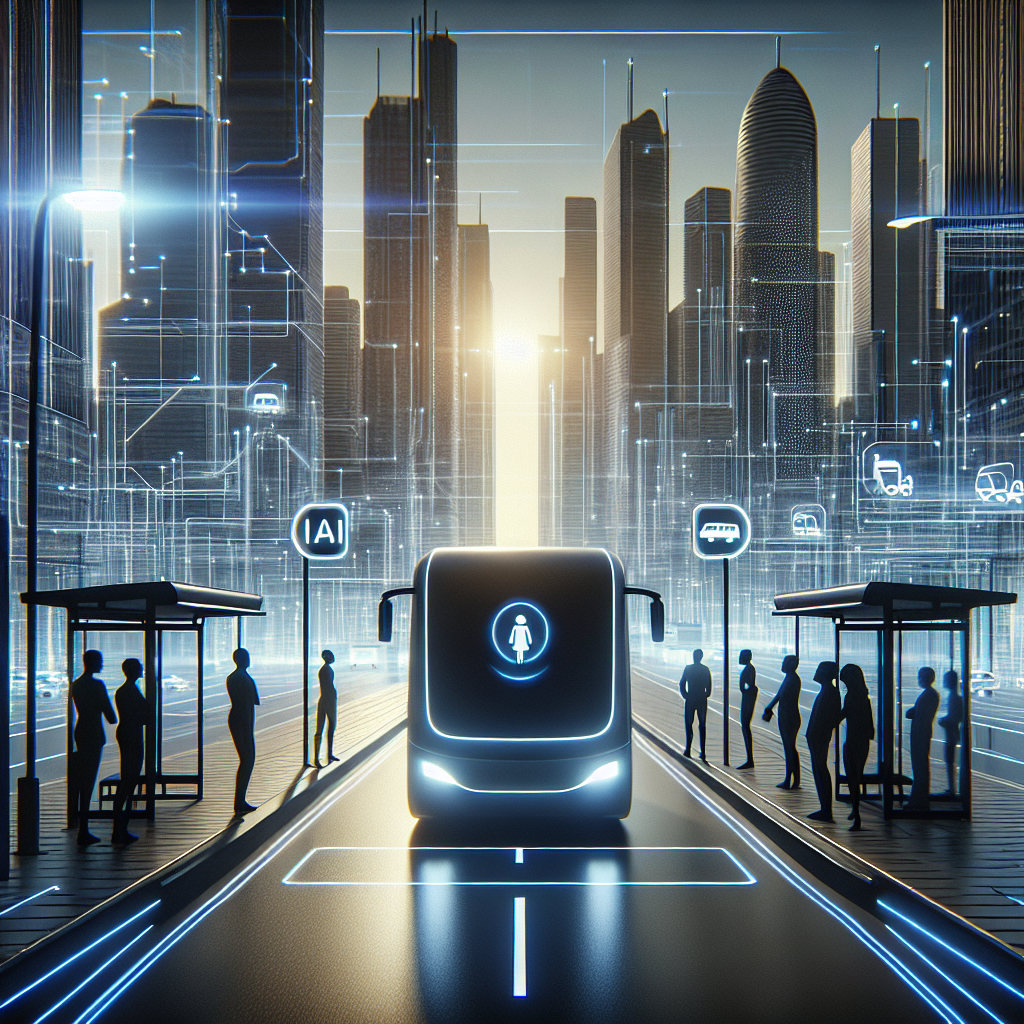The Future of AI-Powered Autonomous Buses in Transportation
Autonomous buses have been a topic of interest in the transportation industry for several years now. With advancements in artificial intelligence (AI) and the growing need for more sustainable modes of transportation, autonomous buses are becoming a more viable option for cities around the world. In this article, we will explore the future of AI-powered autonomous buses in transportation and how they could revolutionize the way we move people from point A to point B.
Benefits of AI-Powered Autonomous Buses
There are several benefits to using AI-powered autonomous buses in transportation. One of the main advantages is safety. Autonomous buses are equipped with sensors and cameras that allow them to detect obstacles, pedestrians, and other vehicles on the road. This can help reduce the number of accidents caused by human error, which is a leading cause of traffic accidents worldwide.
Another benefit of autonomous buses is efficiency. These buses can be programmed to follow optimal routes, reducing travel time and fuel consumption. They can also communicate with each other to avoid congestion and traffic jams, further improving efficiency on the road.
Autonomous buses also have the potential to reduce the environmental impact of transportation. By using electric or hybrid engines, these buses can help reduce greenhouse gas emissions and improve air quality in cities. This is especially important as more and more cities around the world grapple with air pollution and climate change.
Challenges of AI-Powered Autonomous Buses
While there are many benefits to using AI-powered autonomous buses in transportation, there are also several challenges that need to be addressed. One of the main challenges is public acceptance. Many people are still wary of the idea of autonomous vehicles, especially when it comes to buses that transport large numbers of passengers. Building trust in the safety and reliability of autonomous buses will be crucial for their widespread adoption.
Another challenge is the cost of implementing autonomous bus systems. While the technology is rapidly advancing, it can still be expensive to develop and deploy autonomous buses on a large scale. Cities and transportation agencies will need to invest in infrastructure and training to ensure the successful integration of autonomous buses into their transportation networks.
Regulatory and legal issues also pose a challenge to the widespread adoption of autonomous buses. Governments around the world are still grappling with how to regulate autonomous vehicles and ensure they meet safety standards. There are also questions about liability in the event of an accident involving an autonomous bus. Clear regulations and guidelines will be essential for the successful deployment of autonomous buses in transportation systems.
The Future of AI-Powered Autonomous Buses
Despite the challenges, the future of AI-powered autonomous buses in transportation looks promising. As technology continues to advance and costs come down, we can expect to see more cities around the world adopt autonomous bus systems in the coming years. These buses have the potential to revolutionize the way we move people in urban areas, improving safety, efficiency, and sustainability.
One of the key trends in the future of autonomous buses is the development of shared mobility services. Companies like Uber and Lyft are already exploring the idea of using autonomous vehicles for ride-sharing services, and this could extend to autonomous buses as well. By offering on-demand, shared autonomous bus services, cities can reduce the need for private car ownership and improve overall transportation efficiency.
Another trend to watch in the future of autonomous buses is the integration of AI and smart city technologies. Autonomous buses can be equipped with sensors and cameras that collect data on traffic patterns, air quality, and other factors that can help cities improve their transportation systems. By leveraging this data, cities can optimize bus routes, reduce congestion, and improve the overall passenger experience.
FAQs
Q: Are autonomous buses safe?
A: Autonomous buses are equipped with advanced sensors and cameras that allow them to detect obstacles and other vehicles on the road. While accidents can still happen, autonomous buses have the potential to be safer than human-driven vehicles in the long run.
Q: How much do autonomous buses cost?
A: The cost of autonomous buses can vary depending on the technology used and the size of the bus. However, they can be expensive to develop and deploy on a large scale. As technology advances and costs come down, we can expect to see the cost of autonomous buses decrease over time.
Q: When will autonomous buses be available in my city?
A: The timeline for the adoption of autonomous buses in cities around the world will vary depending on factors like regulatory approval, infrastructure development, and public acceptance. While some cities have already started testing autonomous buses, it may take several years before they are widely available in most cities.
Q: What are the environmental benefits of autonomous buses?
A: Autonomous buses can help reduce greenhouse gas emissions and improve air quality in cities by using electric or hybrid engines. By optimizing routes and reducing fuel consumption, autonomous buses have the potential to be more environmentally friendly than traditional buses.
In conclusion, the future of AI-powered autonomous buses in transportation looks bright. With advancements in technology and a growing need for more sustainable modes of transportation, autonomous buses have the potential to revolutionize the way we move people in urban areas. While there are challenges that need to be addressed, the benefits of autonomous buses in terms of safety, efficiency, and sustainability make them a promising solution for the future of transportation.

